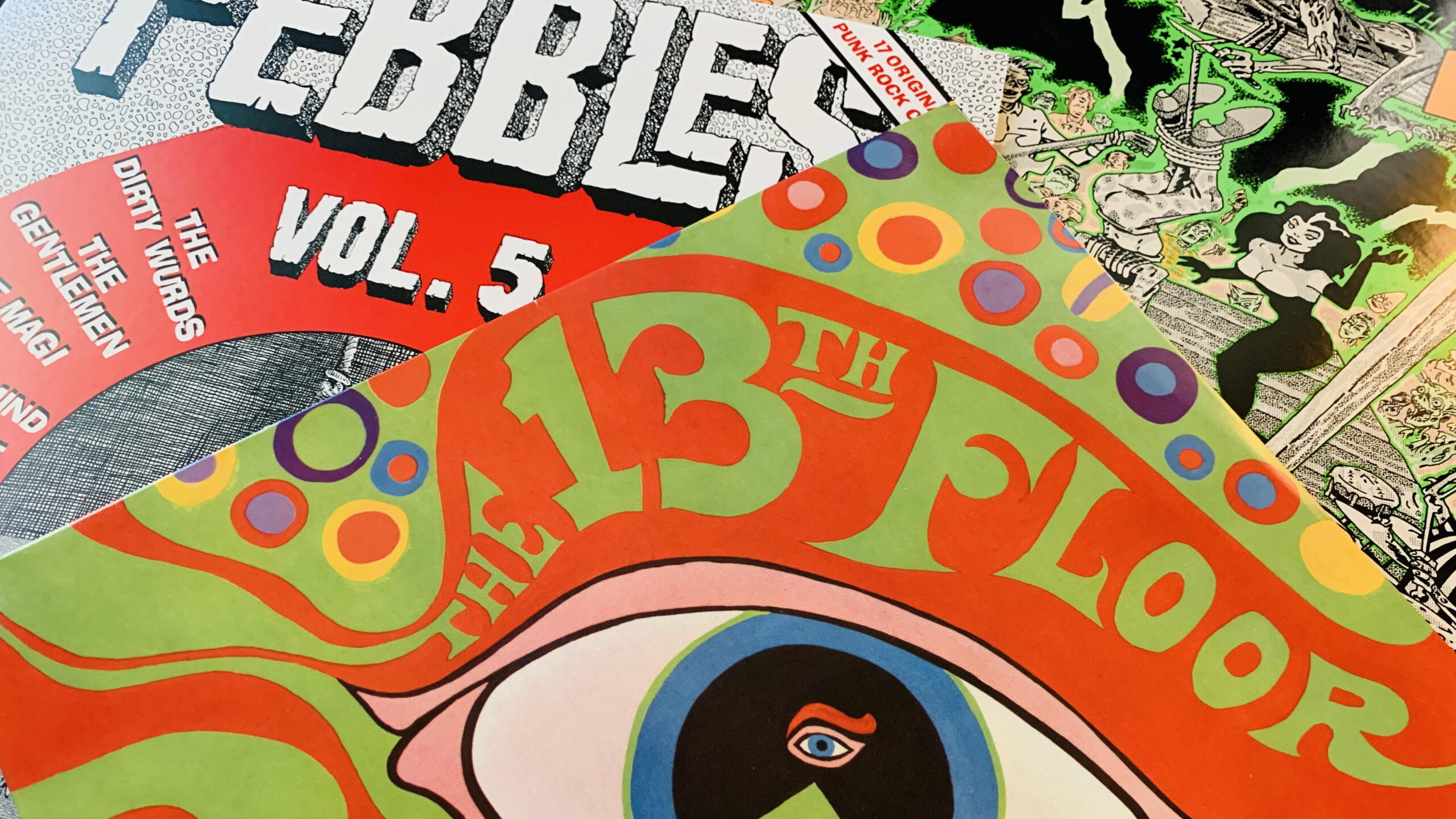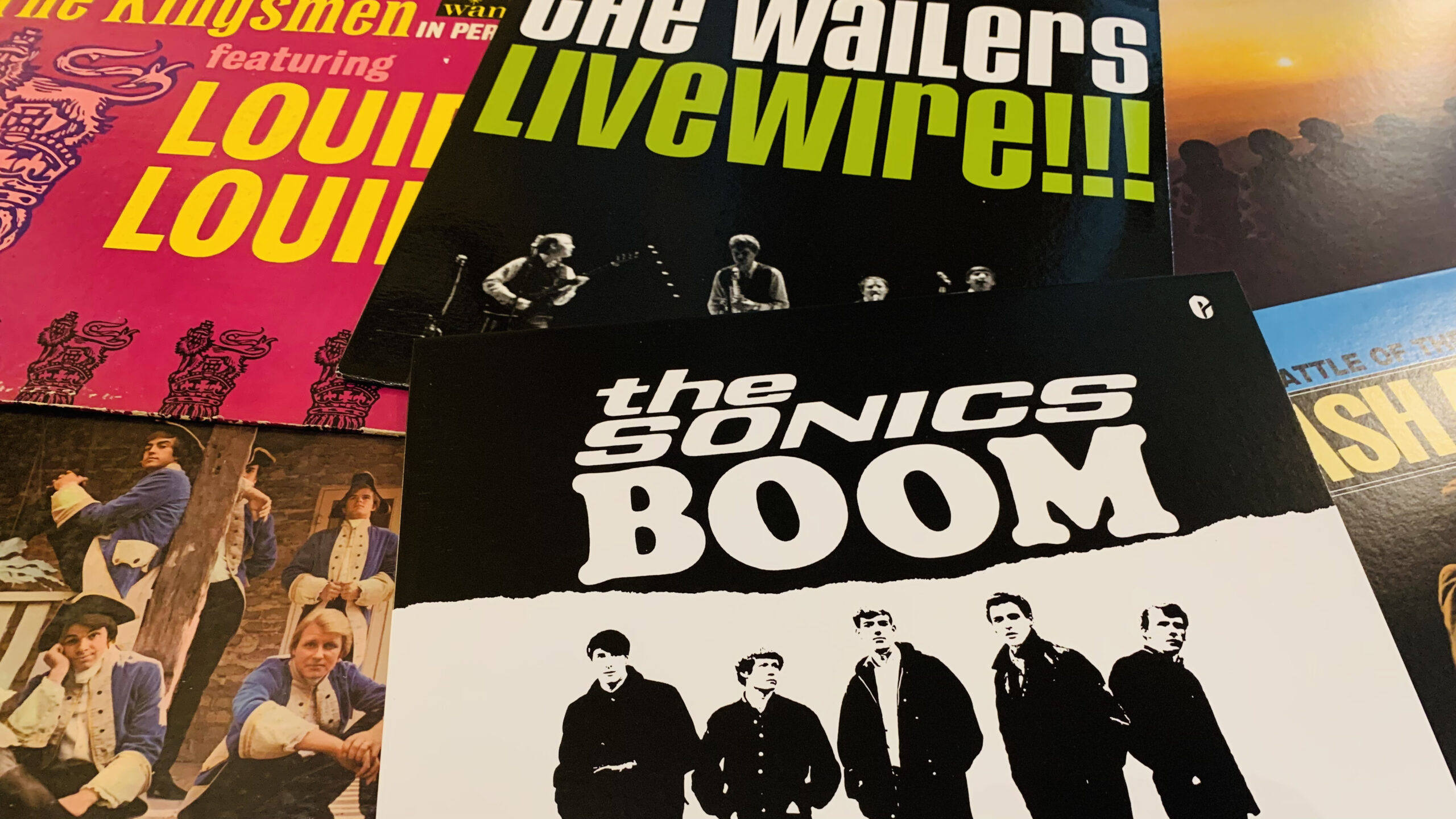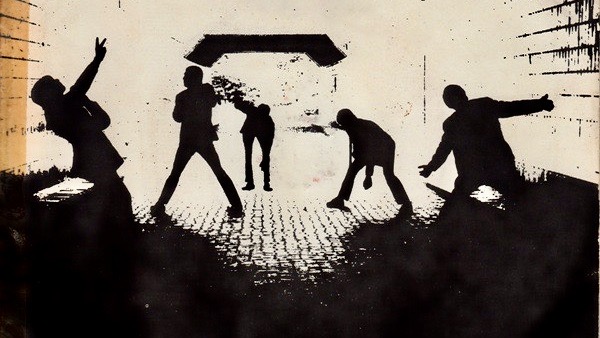
On June 5th, 1964, The Beatles arrived in The Netherlands for the first time. Minus Ringo Starr – who was temporarily sidelined with tonsillitis – and with substitute Jimmie Nicol on drums, the band made an appearance on Dutch television, toured the canals and infamous red light district of Amsterdam, and played a pair of shows that would linger in national legend for years to come. The group would never return to Holland again, but a distinct and lasting mop-topped-shaped impression was made nonetheless. The Netherlands, like seemingly the rest of the world, was in the throes of Beatlemania.
Among the hordes of Dutch kids who followed every step of The Beatles’ two-day tour through Holland, many would pick up guitars and drums of their own in the weeks and months that followed. These young folks would form bands that eventually began to compete for attention and airspace with established groups and artists, and by late 1965, the entire landscape of Dutch popular music had shifted in the direction of these new groups. In a nod to their biggest source of inspiration, these bands would be tagged with the catch-all term, “Nederbeat.”
While the quartets and quintets that formed this scene took great pains to emulate The Beatles, The Rolling Stones, The Kinks, and the rest of the British Invasion era groups, the best of the Nederbeat bands carved out their own unique sounds, even in their often-miniscule discographies. One feature that united the acts of this loosely-connected scene was a decidedly homespun sound. While several Dutch bands were affiliated with successful international labels such as Decca, Philips, and RCA Victor, their recordings often shared a similar spirit with the rustic sounds of American garage bands.
Another factor that formed a strong connection with their British and American counterparts is that the Nederbeat groups virtually all wrote and performed their songs in English. Despite this, the vast majority of Dutch rock groups from the sixties experienced little success or recognition beyond the borders of Holland – partially due to the fact that the Dutch music of 1965-67 more resembled the vanguard of 1963-65, which perhaps sounded passé to adventurous listeners in Britain and America in the wake of psychedelia.
Psych rock and other more experimental forms would also reach The Netherlands by 1967, and while some later Nederbeat variations are represented in this feature, the majority of the tracks presented here are from the first wave of post-Invasion Dutch music. As was the case with last week’s feature on New England garage rock, many of the best exemplars of Nederbeat are currently not available on Spotify. Therefore, the “real” playlist to check out is found at the YouTube link below, while the Spotify one presents a solid-but-compromised overview of the Nederbeat scene. Enjoy!
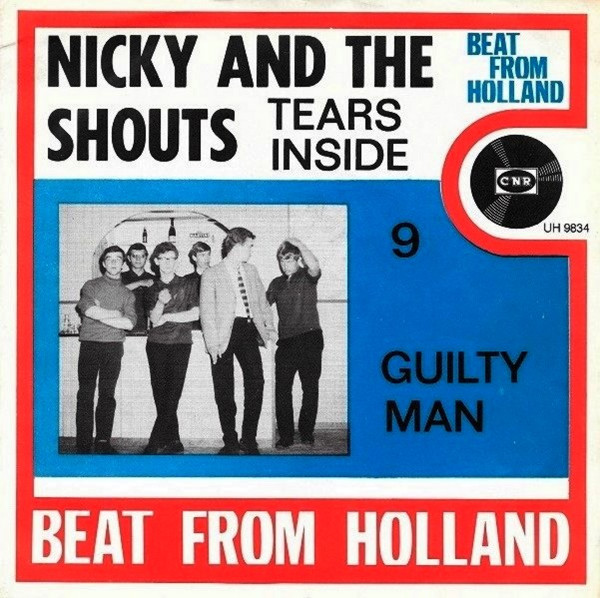
The Groningen group Nicky and The Shouts released one single per year between 1965-67. The best of these is their 1966 effort, “Tears Inside.” Highly melodic and driven by a propulsive beat, the song draws clear inspiration from The Beatles in its glassy guitars and group harmonies, but there’s a low-end heft to the track that sounds like a mid-decade update to the A Hard Day’s Night sound.
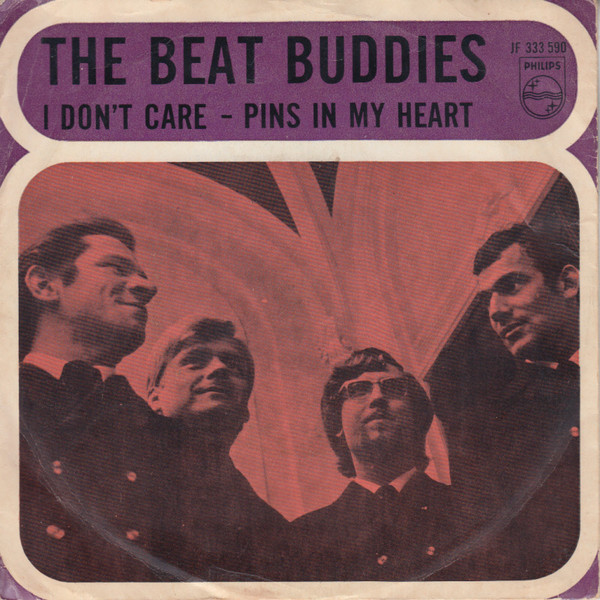
More so than the American garage bands that we’ve covered in recent features, it seems as if the Dutch groups frequently relegated their best songs to B-sides. That’s the case for Amsterdam’s Beat Buddies, who tucked their finest track onto the flip side of their final single. “Pins in My Heart” features relentless energy, and its mid-song instrumental break brings the song’s garagey undercurrent to the forefront.
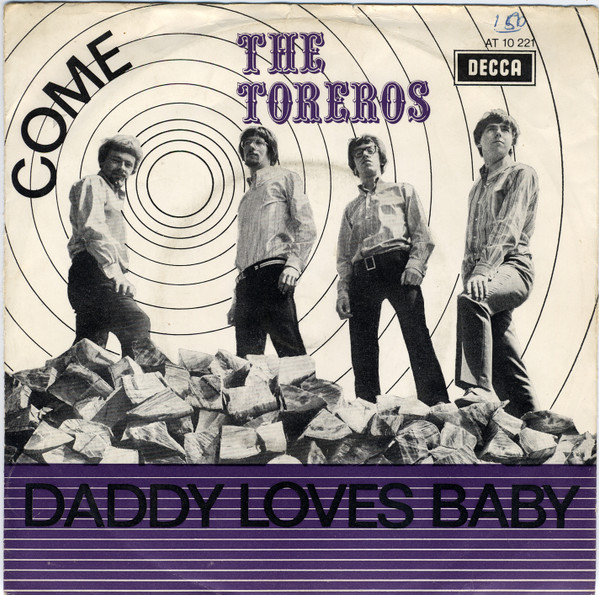
Boy, those harmonies in the verses to this original track by The Toreros sure sound familiar. If imitation is truly the sincerest form of flattery, John and Paul surely must’ve blushed if they ever actually heard this one. Aside from tickling a Beatle itch, “Come” is a plenty worthy song in its own right – jangly, melodic, and effortlessly charming. As a side note, The Toreros released this track on Decca Records, who had infamously passed on The Beatles after a 1962 audition for the label.
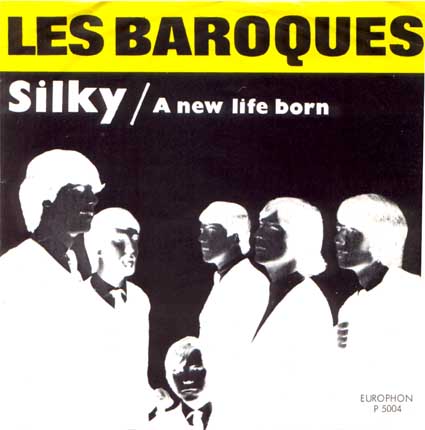
Surprisingly subdued for the A-side to a first single, “Silky” was also repurposed for Les Baroques self-titled debut LP in 1966. Though they were a six-piece group, Les Baroques leave plenty of space on this track, stepping aside from the beat-driven sounds of their scene contemporaries, and making a strong first impression – due in no small part to a unique approach.
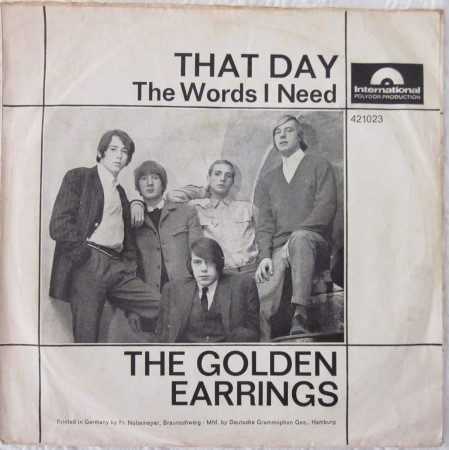
From the band that would later become Golden Earring (of “Radar Love” fame), “That Day” trades in the downcast sound epitomized by The Kinks’ mid-sixties singles. While it doesn’t feature the same level of wry social observation of a typical Ray Davies masterpiece, The Golden Ear-Rings display an innate knack for melody, harmony, and pop smarts – far better than what was shown on their 1966 Nuggets II trifle, “Daddy Buy Me a Girl.”
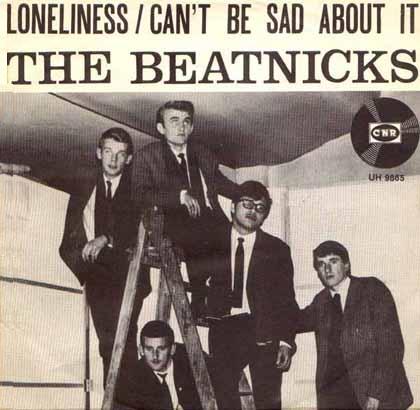
Another moody minor-key track, “Can’t Be Sad About It” was written by Beatnicks’ guitarist Theo Pols, who likely contributed to the strong group harmonies that give the song an added depth and dimension. The B-side to their second of three singles, “Can’t Be Sad About It” hardly sounds like it’s taking its own advice, but the track’s melancholy demeanor is a big part of its charm.
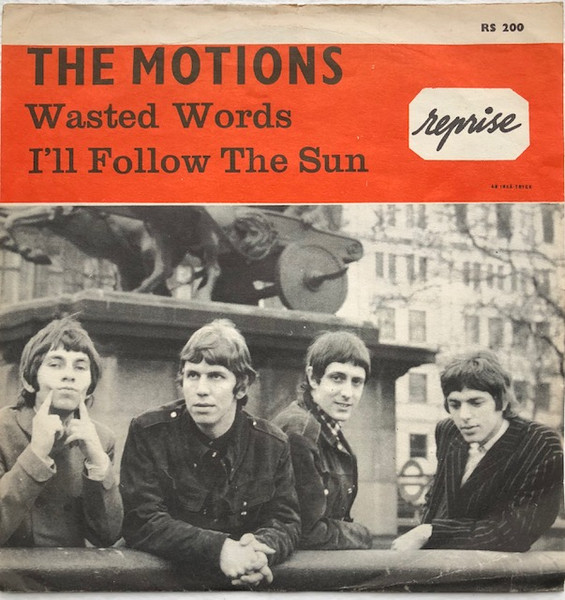
The Motions were one of the earliest and most successful of the Nederbeat groups, scoring a series of hits that included the Nuggets II standout, “For Another Man.” For this feature, I chose to highlight this 1965 single, and centerpiece to the band’s solid 1965 debut LP, Introduction to The Motions. “I’ll Follow the Sun” (an original, not a cover of the Beatles for Sale song) is an impressively complex composition; and though it doesn’t exactly put the “beat” in Nederbeat, it’s one of the group’s finest offerings.
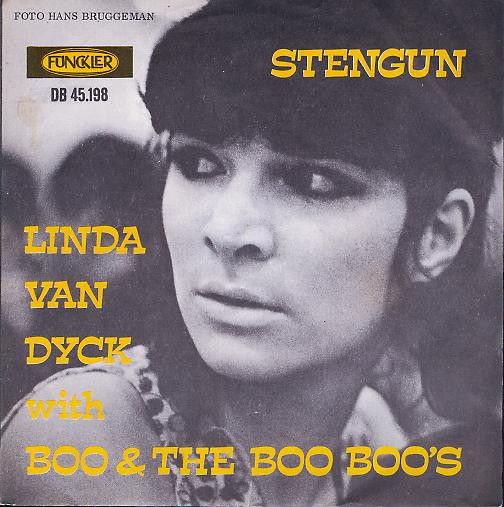
A true garage classic, “Stengun” is the only released track credited to the wonderfully-monikered Boo & The Boo Boos, but it’s equally a showcase for the vocal work of the Amsterdam singer, Linda van Dyck. The song’ menacing verses are juxtaposed with clamoring instrumental passages that are about as wild as anything to hit the airwaves on either side of the Atlantic in 1966. It’s an undeniably cool track from an intriguing one-off collaborative effort.
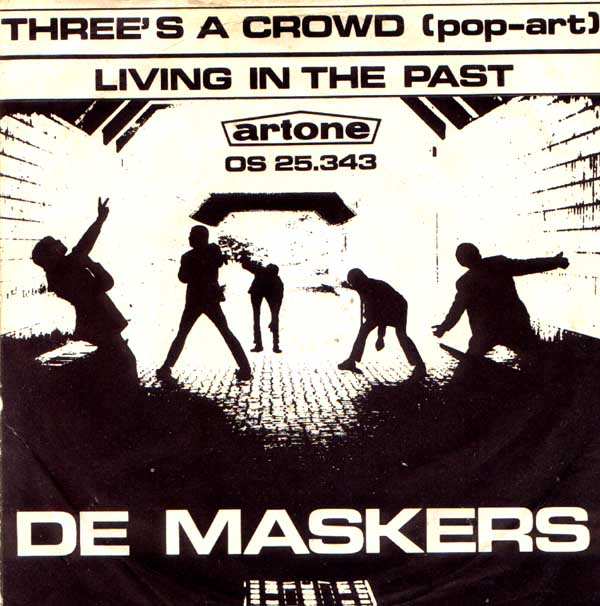
Even if this track wasn’t any good – and it’s definitely excellent – I would’ve had a hard time keeping that 45 cover off of this article; a commonality among the tracks represented here was great sleeve artwork, as opposed to the mostly label-only singles from our recent features on the Pacific Northwest and New England. Back to the music, “Living in the Past” is another track unfairly relegated to the B-side, with its minor-key melody, shifting rhythm, backing vocals, and whirling organ combining to create a memorably vivid whole from the Amsterdam quintet.
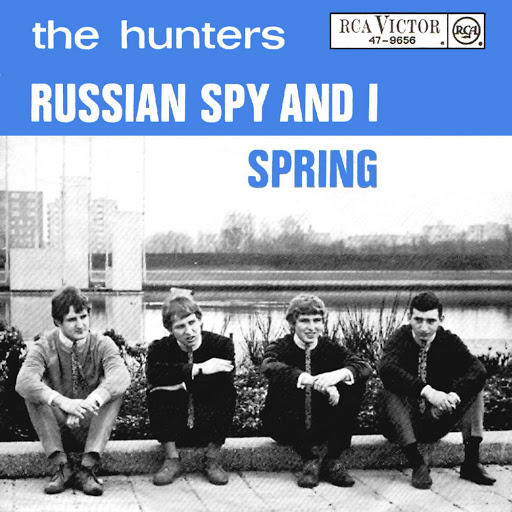
This is another great one. Written by the mysterious Jackie Javellin (aka Casper Koelman), “Russian Spy and I” was first recorded by the Amsterdam group, The Hunters. Introduced by a dexterous descending guitar riff, the track morphs into a fascinating metaphor on politics, both of the personal and international varieties. Mode shifts keep the listener on their toes, but the melodic richness and rollicking performances should keep them coming back.
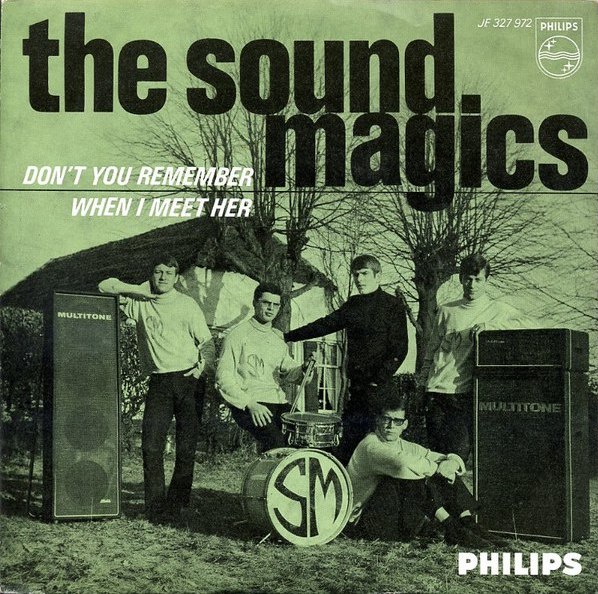
Perhaps my favorite track to ever come from The Netherlands, I’ve already proclaimed my love for this haunting single by The Sound Magics in a recent piece for Strange Currencies. A highlight of Rhino’s absolutely essential Nuggets II compilation, “Don’t You Remember” is a true gem from the Nederbeat scene.
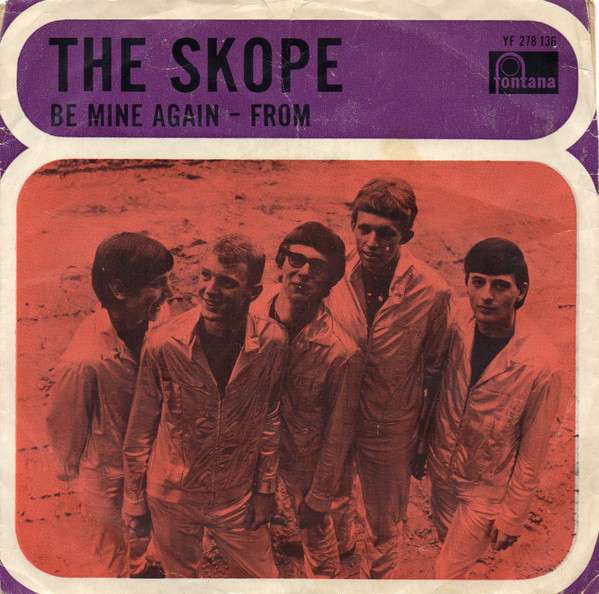
Written by Shel Shapiro, and originally recorded by his band The Rokes, “Piangi con me” would become an American hit in the hands of The Grass Roots, who recorded it in 1967 as “Let’s Live for Today.” In between those two versions, the song was cast as “Be Mine Again” by the Dutch group, The Skope. It’s their take that stands as the most impressive, urgent, and certainly the most garage-adjacent. It’s a powerful composition, and in the hands of this band, it makes for an absolutely beguiling recording.
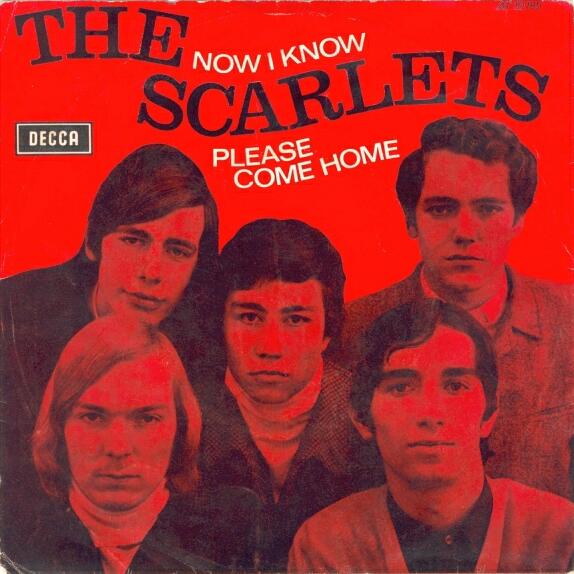
It’s safe to assume that many of the Nederbeat groups were composing songs in a language that was not their primary one. With that consideration, the lyrical simplicity in many of these tracks is fully understandable. The earnestness of a song like The Scarlets’ “Now I Know” may initially come off as hokey, but in the right light, it’s almost disarmingly charming. Add in some well-placed guitar jangle, and you’ve got something that is damn tough to resist.
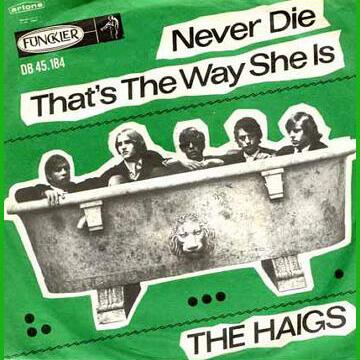
A genuine throwback before we start shifting toward the morphing styles of the latter part of the sixties, The Haigs’ “Never Die” nails the early Beatle sound, right down to the harmonica and mid-song scream. Like British and American bands, Dutch groups would move in a decidedly different direction in 1967 and beyond: one less-obviously indebted to the Fabs. Besides, “Penny Lane” wasn’t exactly easy to replicate. That said, neither was With the Beatles, though The Haigs make it sound like a snap here.
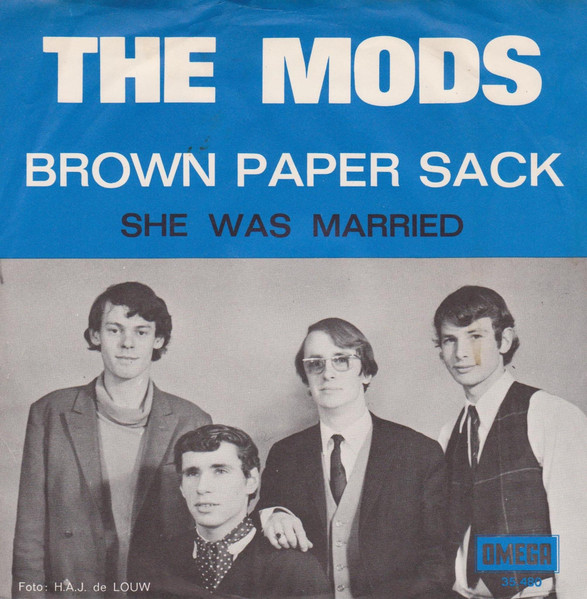
Written by Larry Rogers, and first recorded by the Memphis band The Gentrys in 1965, “Brown Paper Sack” would become something of a minor garage rock standard in time – covered by garage revivalists and fellow Memphians Reigning Sound on their 2002 album, Time Bomb High School. This 1966 A-side by The Mods is a relatively faithful cover of The Gentrys’ original version, though it brims with the rough-edged quality that characterized the Nederbeat scene.
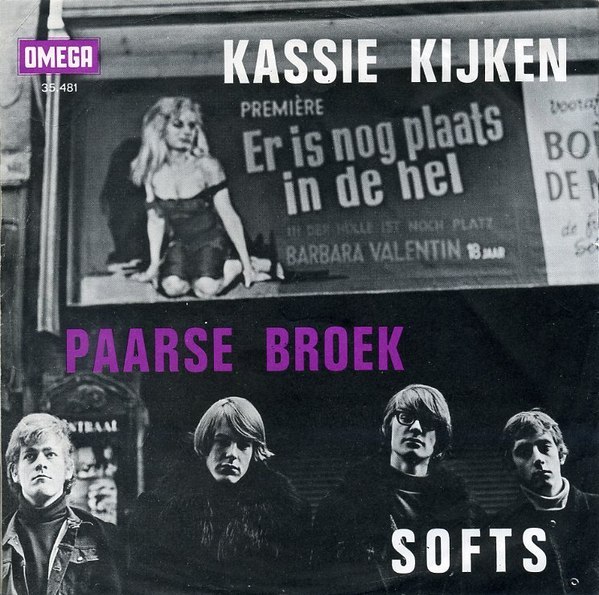
The only song on this playlist to be composed and performed in Dutch, “Kassie Kijken” comes across like a super-amped-up take on the Bo Diddley sound. The Amsterdam-based Softs only released one single during their brief career, but “Kassie Kijken,” the similarly spirited B-side “Paarse Broek,” and a fantastic record sleeve make it one of the most coveted items among Nederbeat collectors.
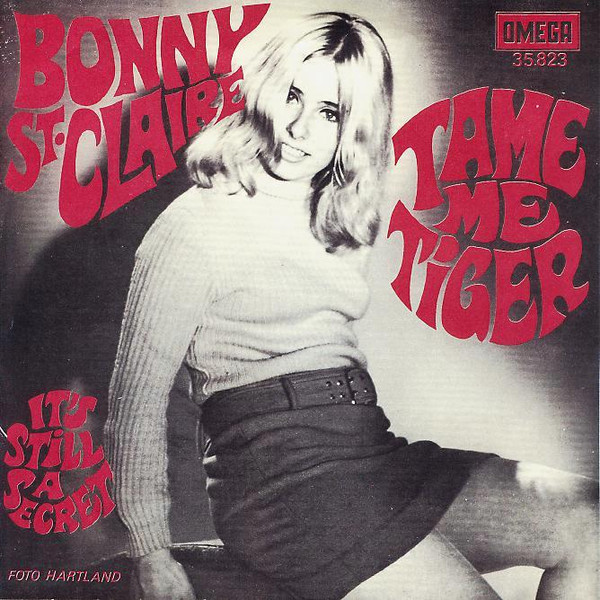
Representing Dutch pop music’s embrace of a harder-edged, garage-inspired sound, this debut single from Bonny St. Claire stands as an alluring first impression from an artist who would enjoy considerable success over a decades-long career. In many ways, “Tame Me Tiger” occupies a similar space to the contemporaneous “yé-yé” sound, but it’s fully capable of making an impact on its own.
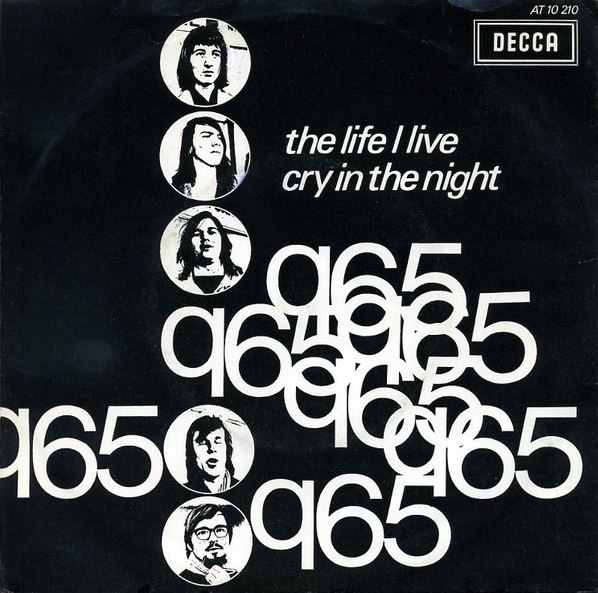
Another track featured on Nuggets II, “The Life I Live” stands as the signature recording by Den Haag’s Q65. Leading off the band’s 1966 debut LP, Revolution, the track seethes with a menacing intensity that showcased the arrival of a darker sound in Holland. Now viewed as one of the central documents of the Nederbeat scene, Revolution helped to establish Q65 as one of the most successful Dutch bands of the sixties.
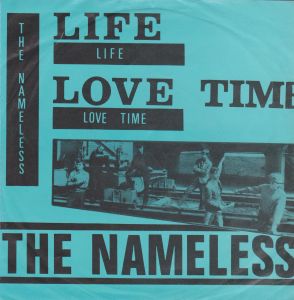
The Nameless only released one A-side, but it has since become a staple of Dutch rock compilations. Propelled by a dramatic vocal melody in its explosive chorus, “Life” is an impressively compact piece of songwriting. Composed by the group’s lead guitarist, Fred Cowan, it stands among the great one-off singles that the Nederbeat scene had to offer.
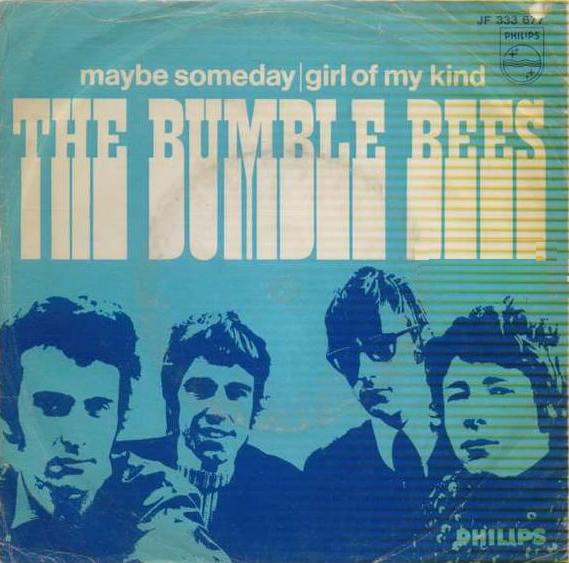
One of my favorite tracks on this list, the B-side to the second and final single by Den Haag’s The Bumble Bees is an engrossing mix of garage, folk, and psychedelia. The song’s haunting minor key progression and vocal melody are strong on their own, but when paired with a trumpet fanfare that comes off as both mournful and celebratory, it makes for a piece that is both emotionally resonant and sonically stimulating. This one is not to be missed.
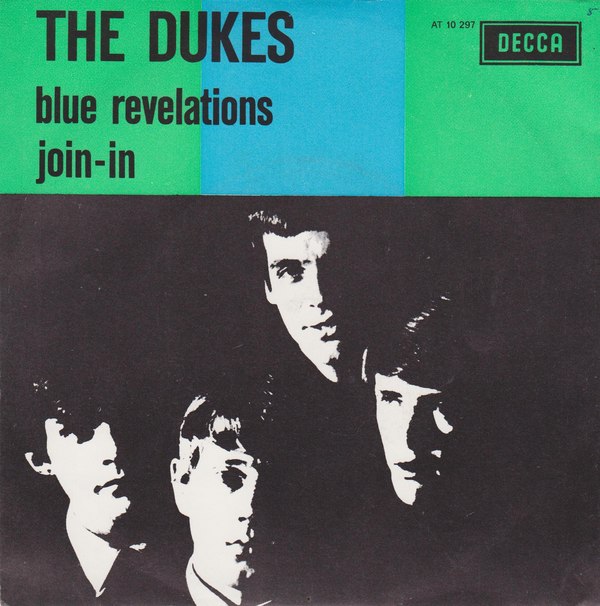
Written and originally recorded by the Los Angeles folk rock band The Lewis and Clark Expedition, “Blue Revelations” is given the Nederbeat treatment in this fourth and final single from The Dukes. Ramping up the tempo from the already-solid original version, the track becomes something approaching the revelation referred to in its title. This is a simply fantastic pop single: one that frustratingly is presently unavailable on the major streaming services, but that is long overdue due for wider recognition.
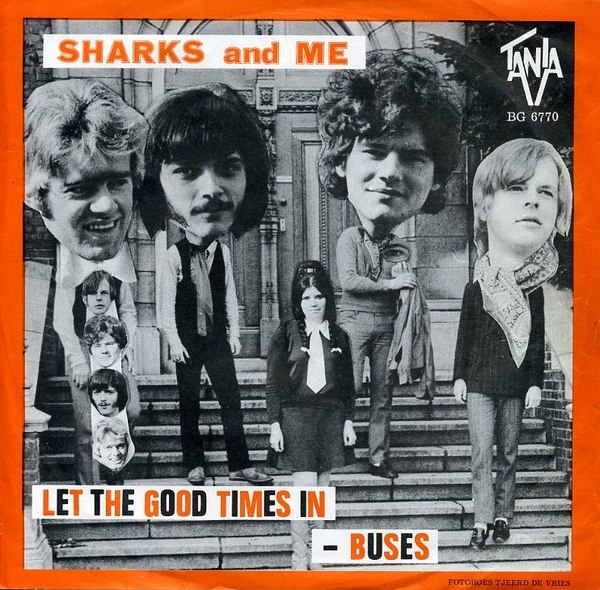
Amsterdam’s Sharks and Me straddle the line between garage and psych on the B-side to their debut single. “Buses” is sharp, upbeat rock that fits in well with some of the then-new trends on the British scene, as exemplified by bands such as The Move and Fire. Plus, this is another one of those situations where, even if the song wasn’t any good, I’d still have to find a way to work that bizarre sleeve artwork into this article.
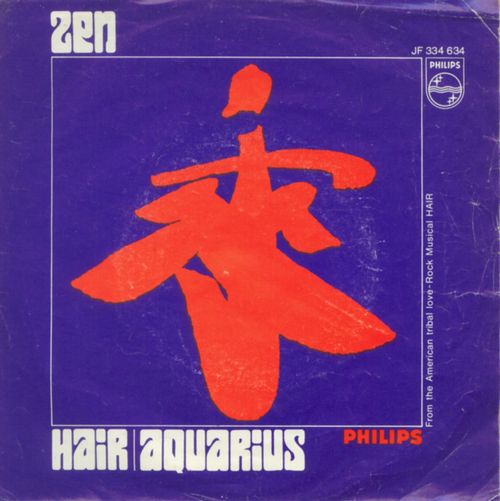
Prior to the massively successful 1969 version by The Cowsills, a Nederbeat recording of the theme song to the rock musical Hair arrived from the Amsterdam band, Zen. Repurposed as the opening cut and title track to the group’s 1969 debut LP, “Hair” stands at an intriguing crossroads between garage, psych, pop, and musical theater.
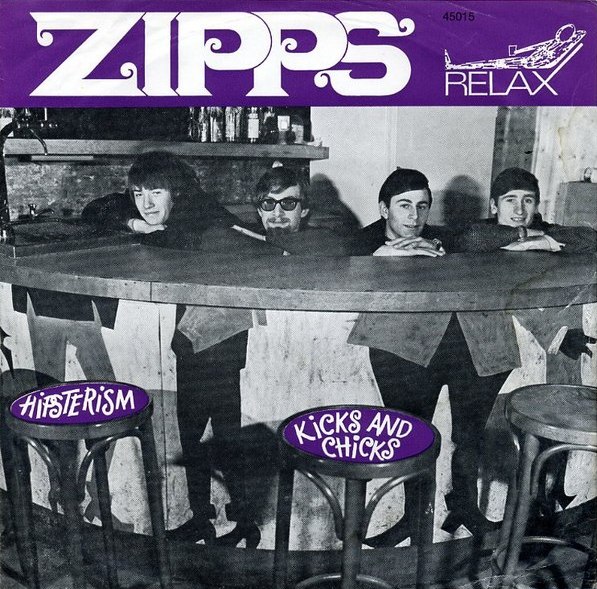
For whatever reason, The Zipps’ 1966 B-side “Kicks and Chicks” never really stood out as a Nuggets II highlight until preparing for this piece. Perhaps the acquired taste vocals needed time to grow on me. Perhaps the nearly-identical alternate version (the only one presently available on streaming services) is just that much better. Perhaps it’s Stockholm Syndrome from the “hang around, stick around” hook in the chorus. Whatever it is, I’ve learned to love it; and you should as well.

In contrast, this one didn’t need any extra effort to love. Convincingly “post-punk” – even in its album cover – nearly a decade before the widely-acknowledged arrival of punk, the leadoff track to The Outsiders’ 1968 sophomore album is thoroughly badass. That album, CQ (as in “Seek You”), is one of the best Dutch LPs of its era, but “Misfit” starts it out on a level that would be practically impossible to sustain.
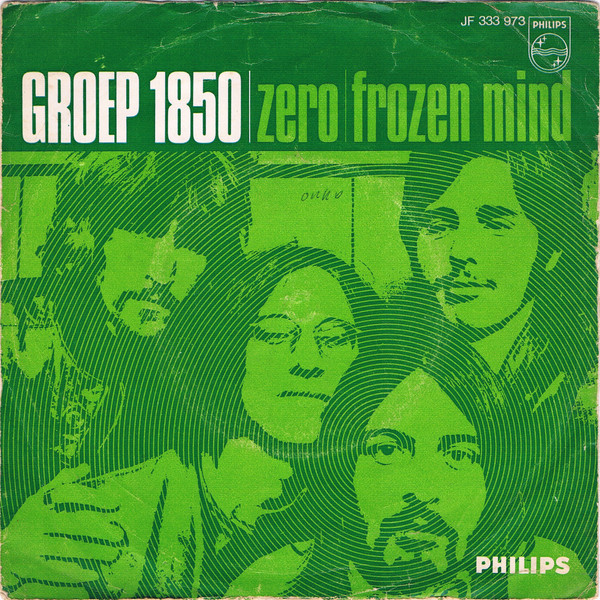
Moving deeper into the realm of psychedelia – and heavy psych at that – this 1968 B-side from Groep 1850 is keenly in tune with new directions in rock at the time. Frequent tone shifts, heavy doses of fuzz, and backwards masking help to create a disorienting experience, but it would be for naught if the source material wasn’t strong to begin with. Fortunately, “Frozen Mind” is a compelling piece, even before its novel production adds another level of intrigue.
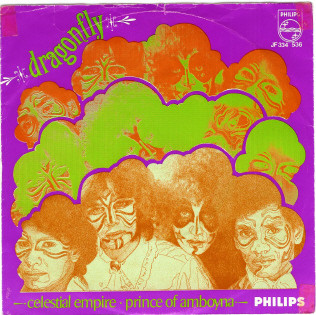
In a similar vein to “Frozen Mind” – from a band once known as Groep 69 – Dragonfly’s “Celestial Empire” trades in a highly-stylized psych sound. With its dense rhythmic groove supplemented by copious fuzz guitar, the track buzzes by at a brisk pace, but reveals more and more depth with each spin. Dragonfly may have gained much of their notoriety from their more theatrical elements – they donned elaborate face painting well before those hacks in KISS – but they brought actual talent to the table as well.
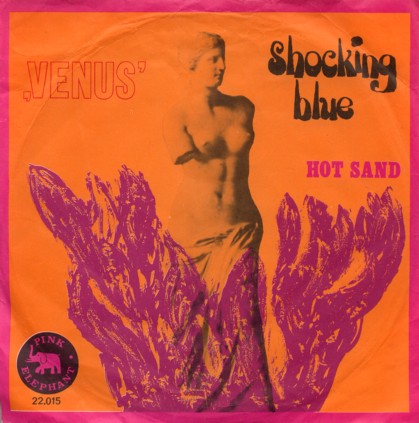
One of the biggest hits ever recorded by a Dutch band, Shocking Blue’s “Venus” hit number one in nine countries following its release in July 1969 – including the United States, where it was the first song by a Dutch act to ever top the Billboard charts. Based partly around the opening chord riff from The Who’s “Pinball Wizard” – itself released just a few months prior – “Venus” is rife with instrumental hooks, but at its undisputed center is a commanding performance from lead vocalist Mariska Veres.
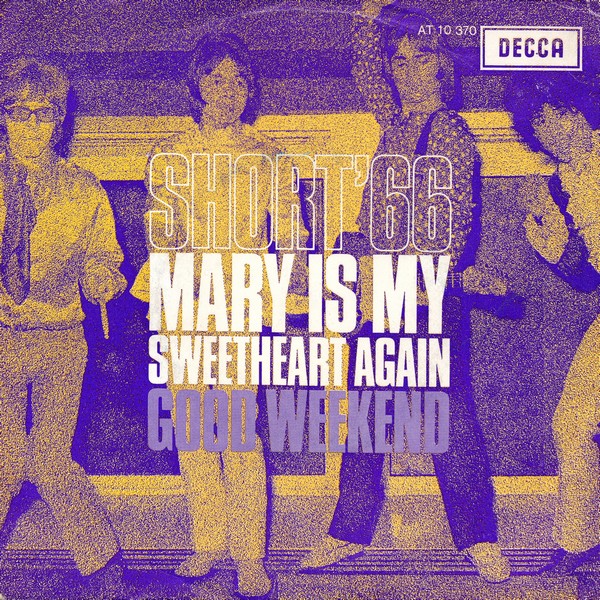
Amsterdam’s Short ’66 released eight singles between 1966-1969, and it’s the B-side to one of the last of those that stands as the group’s peak. Mixing elements of garage rock with the “freakbeat” sound that was sweeping through Britain at the time, “Good Weekend” performs a balancing act on a surprisingly-thin line between heavy and effervescent. It’s an impressive statement from a largely-forgotten group.
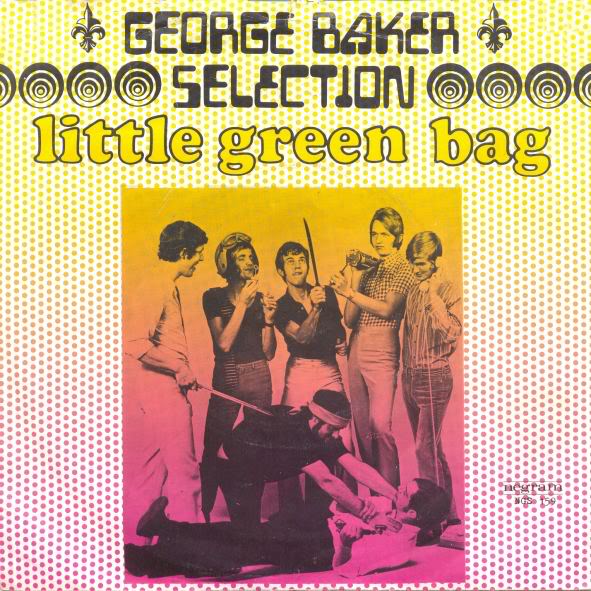
A modest international hit at the time of its release, the George Baker Selection’s debut single, “Little Green Bag,” would earn a second life after appearing in Quentin Tarantino’s 1992 film Reservoir Dogs. Its bass-driven groove, sharp guitar work, and a compelling performance from the charismatic Baker – who co-wrote the track with Jan Visser – make for an infectious combination. For our purposes, it provides a fitting end to this examination of a fascinating era in Dutch pop music.


